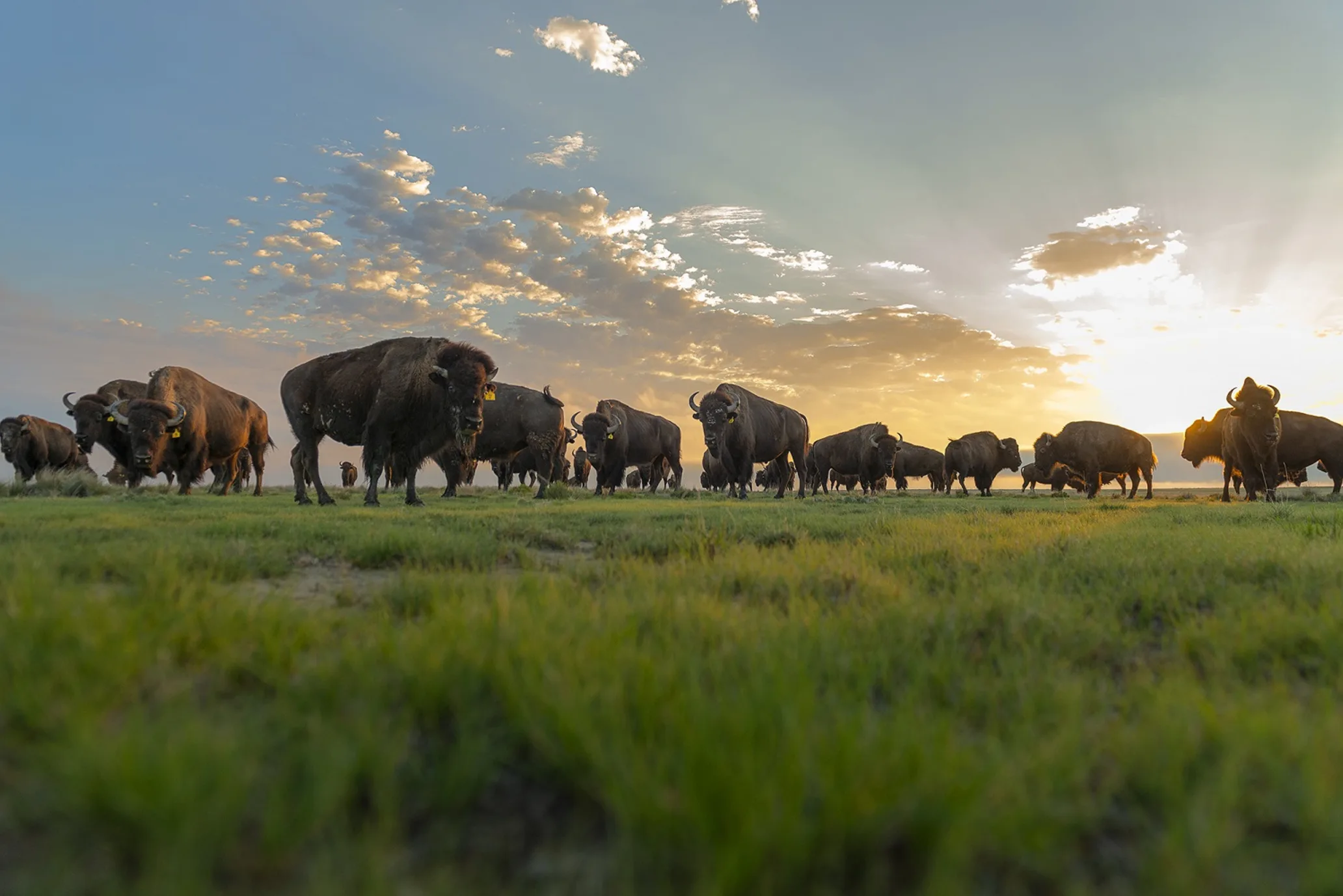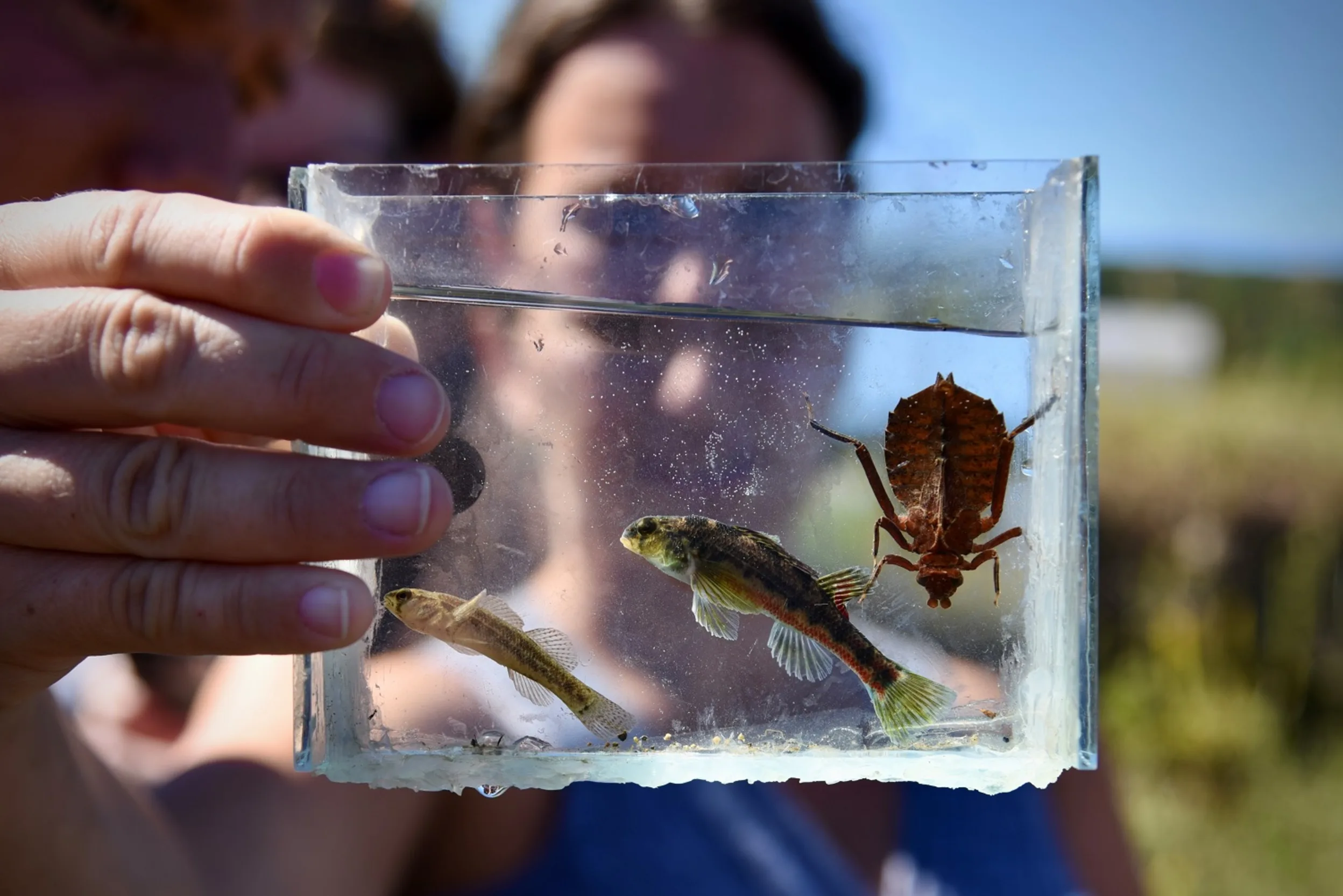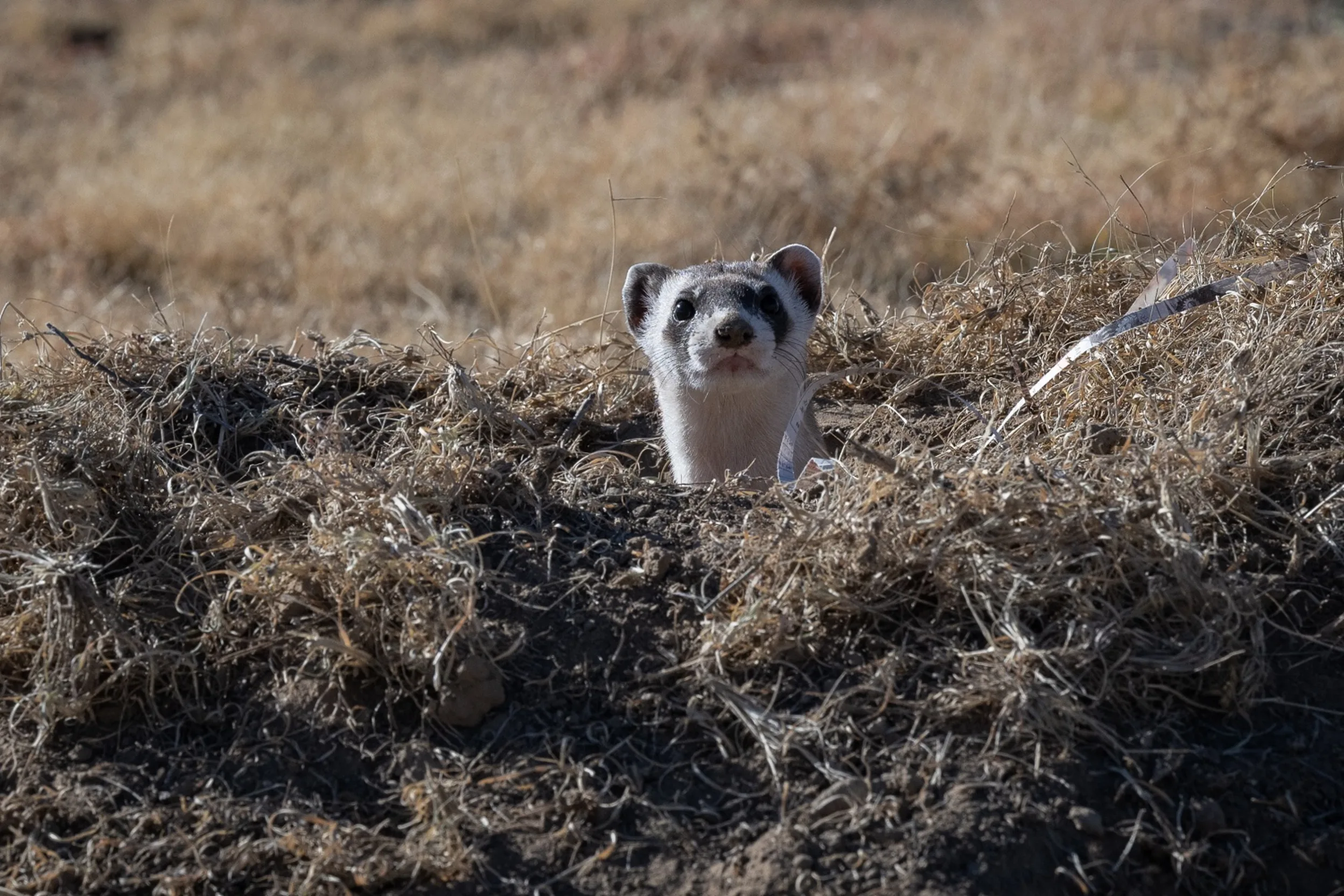Private lands play a vital role in protecting vulnerable species
Convincing private landowners to coexist with endangered species is one of the trickiest barriers that land trusts navigate, but one that is particularly important.

The blog below is an excerpt from the article "Breaking down barriers to endangered species survival" that first published in the Fall 2023 issue of Saving Land Magazine.
Convincing private landowners to coexist with endangered species is one of the trickiest barriers that land trusts navigate, and one that is particularly important, given private lands’ vital role in protecting vulnerable species.
More than two decades ago, mitigation funding for a conservation easement on the Koopmann Ranch, located in the heart of the Bay Area of California, allowed the ranch to stay in the family despite a hefty inheritance tax. Landowner Tim Koopmann has never hesitated to say that a salamander saved the ranch — specifically the federally endangered California tiger salamander, which breeds in a small pond there and made the ranch eligible for the funding.
“We are so proud to be forever partners with the Koopmann family on this project,” said Michael Delbar, chief executive officer of the accredited California Rangeland Trust.
Two additional easements on the property conserve habitat for the federally endangered callippe silverspot butterfly and the California red-legged frog, a federally threatened species.
Ranchers are eager custodians of the land, Delbar says. Since the California Rangeland Trust first worked with the Koopmanns 25 years ago, it has protected 377,000 acres of working ranchland, with nearly 100 other ranch owners lined up to conserve another 220,000 acres, “to do what the Koopmanns did,” Delbar said.

Earlier this year, the California Rangeland Trust secured the funding needed to place a conservation easement on the 9,418-acre Silacci Ranch in the mountains east of Monterey. The ranch is home to three special conservation status plants, bald eagles, golden eagles and the federally endangered California tiger salamander. Delbar says that the ranch and the soon-to-be easement demonstrate that not only are California’s ranches important to its economy, they benefit the environment too.
Introducing neighbors
Freshwater Land Trust, an accredited land trust serving central Alabama, has another way of introducing community members to the endangered species in their own backyards. The trust conserves the habitat of well over a dozen federally listed threatened and endangered species, including the Tulotoma snail, nine species of freshwater mussels and several colorful darter species, which are small, slender fish. Each year, the organization organizes an annual tour to make the connection.

As its name suggests, Freshwater Land Trust’s mission is to conserve environmentally significant land to improve water quality. The federally listed species come with the territory, said Sam McCoy, the trust’s land stewardship director. “We’re chock-full of rivers and streams and practically every waterway has at least one protected species.”
Vulnerable species are even found in the heart of Alabama’s urban capital of Birmingham. Freshwater Land Trust is currently working with Birmingham Land Bank Authority to conserve a property the land bank acquired through a tax sale that includes watercress darter habitat, said Elizabeth Sims, the trust’s land conservation director.
Each annual endangered species tour has attracted a few dozen people from across the community, from public works staff to home-schooled children and their families. At one site, the group stands next to a highway, and with traffic whizzing by, learns that these tiny, endangered fish live in the stream at their feet.
“The day is about celebrating successes with partner agencies and educating the community about the rare species that are right in their backyard,” Sims said.
The event reinforces Freshwater Land Trust’s mission and its role in the community. Sims believes that by demonstrating the organization’s role in conserving habitat for federally listed species, it showcases the necessity of permanent land protection.
“We get to highlight why the area is special in a specific way,” said Sims. “It garners pride.”
Embracing the land
The black-footed ferret has had more than its share of barriers to survival. The tiny predator was once thought to be extinct but has been coaxed back from the brink through a captive breeding program that began in 1992.
Food is another barrier. A black-footed ferret family eats about 250 prairie dogs a year. Creating a prairie dog colony that is large enough to feed a black-footed ferret family is time-consuming work, but one that is welcomed by the accredited Southern Plains Land Trust, which was founded in 1998 and serves southeastern Colorado.
“The breakthrough came in 2015, when we were able to buy a property we call Heartland and then a neighboring property,” said Jay Tutchton, Southern Plains Land Trust’s interim executive director and preserve manager.
The 43,000-acre fee-owned Heartland Ranch Nature Preserve was already home to prairie dogs but, like prairie dogs across the country, they were vulnerable to the wildlife version of the plague, which is carried by fleas.
Restoring black-footed ferrets was “the fantasy,” Tutchton said, but first came years of flea treatments in both powder and oral form.

Once there were 2,000 acres of prairie dog colonies on the Heartland preserve, it was ready to provide a home for ferrets. In October 2022, scientists from Colorado Parks and Wildlife and the U.S. Fish and Wildlife Service released 30 federally endangered black-footed ferrets there. It was a fulfillment of Southern Plains Land Trust’s mission.
“The major focus of our land trust is biodiversity protection,” Tutchton said. “To me, a land trust embracing biodiversity protection is a no-brainer. It’s just part of embracing the land.”